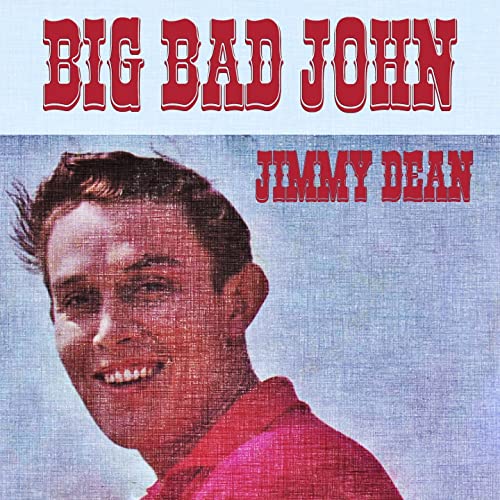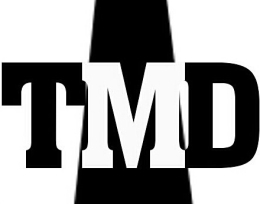Pop Goes The Country is an ongoing series where I explore country music’s biggest crossover hits.
In case you’re wondering, yes, this article is referring to that Jimmy Dean – the one who founded the Jimmy Dean Sausage Company in 1963.
And yet within country music circles and outside of them, it’s almost startling for people to hear that Dean was a country singer at one point too. To be fair, if there’s anything Dean is known as besides a sausage maker or country music artist, it’s a television personality.
Still, it was music that originally inspired Dean to be a star. He learned piano at age ten and soon mastered other instruments as well. After serving in the Air Force in the late 1940s, Dean formed a country music group that played the Washington, D.C. area and was discovered by Connie B. Gay.
From there, Dean’s roads intertwined, as he began his television career in 1955 with his Town and Country Jamboree on WMAL in Washington. In 1957 the CBS television network offered Dean to host a morning show, The Jimmy Dean Show, broadcast until 1959. In between this and his next TV stints – a mid-‘60s ABC afternoon show and an ABC prime-time hour from 1963-66 – Dean scored one of the biggest hits in country music ever.
While serving as a television host, Dean had also been making records for CBS’s recording division, Columbia Records, signing to the label in 1957. Dean’s sole appearance on the country charts at this point was a top five country hit called “Bummin ‘Around” which had come several years earlier in 1953. Dean didn’t find much success with Columbia Records as an artist either. He usually recorded in Columbia’s New York studios and rarely did sessions in Nashville, Tennessee, but during one particular recording assignment to Music City, his career took a turn for the better.
The general routine at Nashville sessions in those days was to complete four songs in three hours (enough for two 45 rpm records). This included working up the arrangements, figuring out each musician’s part, going through the song a couple of times, then stepping up to the microphone to deliver the final product. As you might guess, it was a strenuous task for everyone involved and required major talent onboard.
Dean was on the flight to Nashville for his assigned recording session with just three songs prepared. He needed one more for a B-side. Needless to say, he came up with an idea. A few months earlier in New York, he’d had his first acting experience working in a play, a summer stock production of “Destry Rides Again,” based on the 1939 movie starring Jimmy Stewart. While on set, Dean worked with actor John Mento, a very large man, and extremely tall, who loomed over everyone in the production.
Whenever Dean would pass Mento on the set, he’d address him as “Big John.” Dean thought it had a nice ring to it, so during the hour-and-a-half flight from New York to Nashville, he decided to write a story around his friend, only this story involved putting him in a mine and killing him.
Dean hadn’t packed any paper to write the idea in lyrical form, so he used the American Arlines boarding certificate. He later recorded the song as he read it from that original messy, scribbled note. The session took place at the famous Quonset Hut studio, owned by Owen Bradley, who, as we’ve discussed before in this feature, was one of the three men in Nashville responsible for several of these crossover hits. The studio, used for television productions as well as recordings, had been leased by Columbia to handle its large quantity of artists. Bradley sold it to Columbia outright in 1962, thus christening it “Columbia Studio B.” Dozens of classic recordings came from there over the next twenty years until the studio was destroyed in 1982 immediately following the John Anderson sessions which made up his Wild and Blue album.
Like with last week’s “Don’t Worry,” the sssion players for “Big Bad John” make for an interesting discussion as well. Work began with legendary A-Team guitarist Grady Martin, who, if you recall, was responsible for the fuzz tone on the aforementioned “Don’t Worry.” At the time, Martin owned Cramart Publishing Company (in partnership with Floyd Cramer) and in return for his help on the arrangement, Dean gave him publishing rights.
In regards to Cramer, he was hired to play piano on the track, yet he didn’t end up playing it at all. Feeling that the track didn’t need piano and would end up being drowned out by the background vocalists, Cramer came up with a new idea. He reached over and picked up a chunk of steel generally used as ballast for a television camera, tied a coat hanger around it and hung it on a coat rack. Somewhere in the studio, he found a hammer and began to strike the chunk of steel, apparently looking for the sound of a miner’s pick. He then dropped a microphone over to it and told the engineer to add some echo effects. A ludicrous idea in theory, but one that gave a hit song its signature mark.
Upon its release in fall 1961, “Big Bad John” needed just three weeks to reach the top of both Billboard’s country chart and Billboard’s Hot 100 pop chart. Dean did not realize just how massive it was until one day he was driving in New York City and “Big Bad John” came on the radio while he was crossing the George Washington Bridge. Dean hated to hear himself sing, so he reached over to change the radio to another station, only to hear it was playing his song as well. If you think third time’s the charm, you’d be mistaken, as when he switched to it another station, he once again heard “Big Bad John.”
Let’s also just say that Dean’s friend was well compensated too for being the subject of his song. Like “He’ll Have To Go” from a weeks ago, you have to remember that “Big Bad John” was merely intended to be a B-side.
To end off this piece, I’ll share a separate fun fact about Dean regarding an artist who we’ll hear about later in this feature. After “Big Bad John,” Dean’s next big adventure was ABC’s Jimmy Dean Show which aired from 1963-66. This show was also crucial to country music history. For starters, one of the shows presented the first ever televised country music awards ceremony. On another, frequent guest Roger Miller premiered a little known song called “King Of The Road,” but that’s a story for another time. Join me next time on ‘Pop Goes The Country,’ where we’ll discuss “The End Of The World” and Skeeter Davis.
This piece was written thanks to the following sources:
- Basic information regarding Jimmy Dean’s life and upbringing were taken from The Encyclopedia of Country & Western Music by Rick Marschall.
- Other fun facts about “Big Bad John were taken from Will The Circle Be Unbroken: Country Music In America by the Country Music Hall of Fame and these two articles.


The Jimmy Dean Show episodes air regularly on RFD-TV, and the show is a fascinating time capsule. There’s country, to be sure, but there are also bits of everything from opera to pop to stand up comedy.
LikeLiked by 1 person
I’ve written about the Johnny Cash Show and the Glen Campbell Good Time Hour, but this was really the first “big” country show (not counting radio barn dance programs). Was definitely fascinating to research the history for this one!
LikeLiked by 1 person
One thing I like about all of these shows is that one can see how country interacted easily with other genres. It seems like some of today’s country purists paint a picture of country music of yesteryear as much more “pure and isolated” than was actually the case. The variety and quality of guests on these shows was amazing.
LikeLiked by 1 person
Well, you also have to consider a lot of the sources. “Hee Haw,” for example, kept things down home, but people like Cash and Campbell, who weren’t exclusive country anyway, had more freedom to expand. Same with Dean who was all over the place, haha. It’s definitely interesting. Even as someone who likes country music history, it’s not without its contradictions.
LikeLiked by 1 person